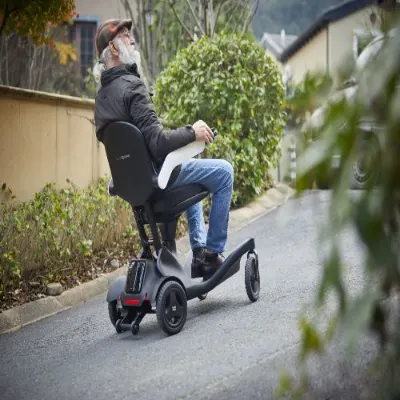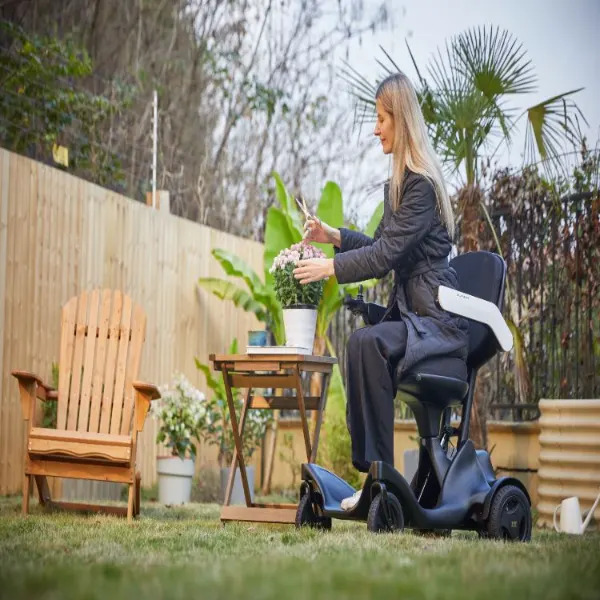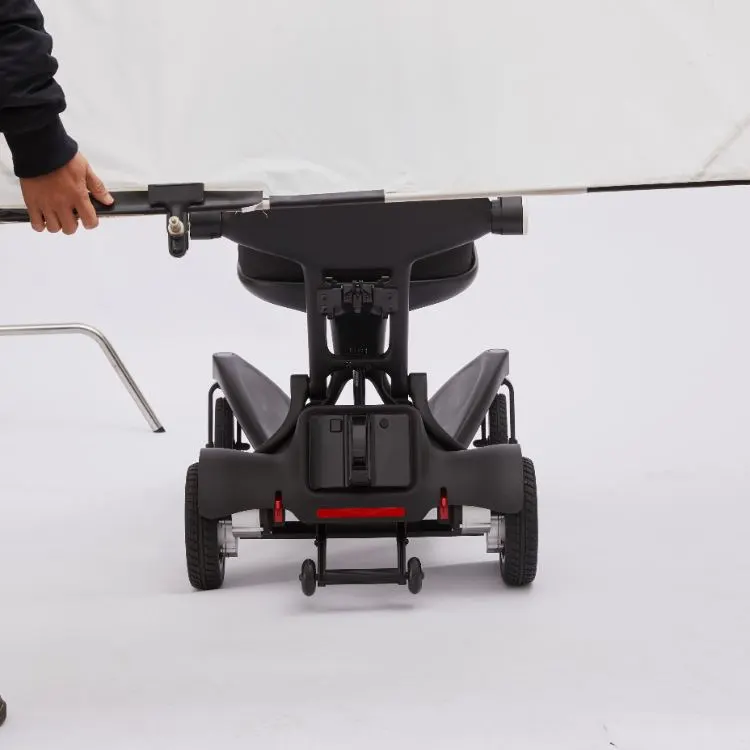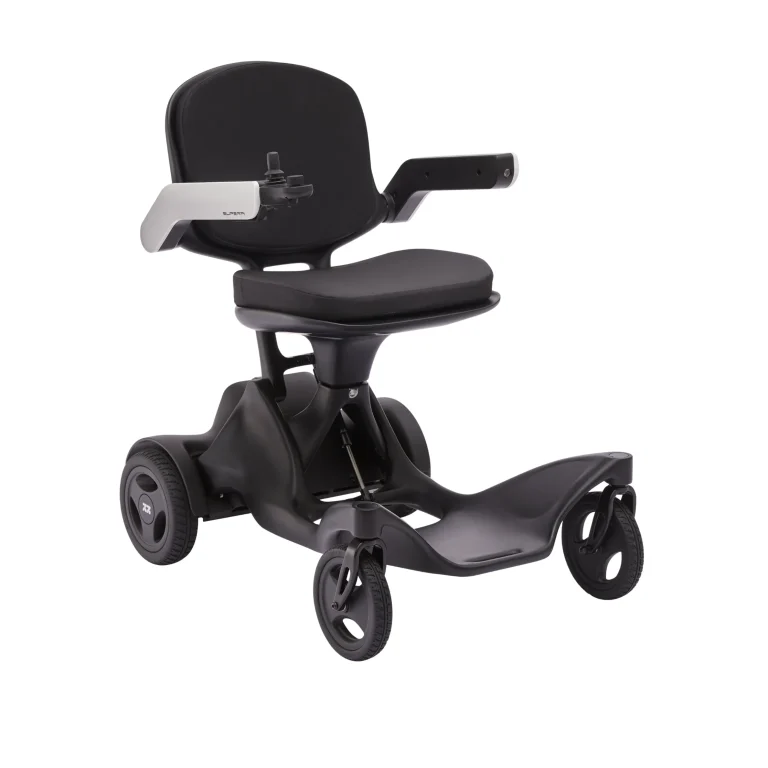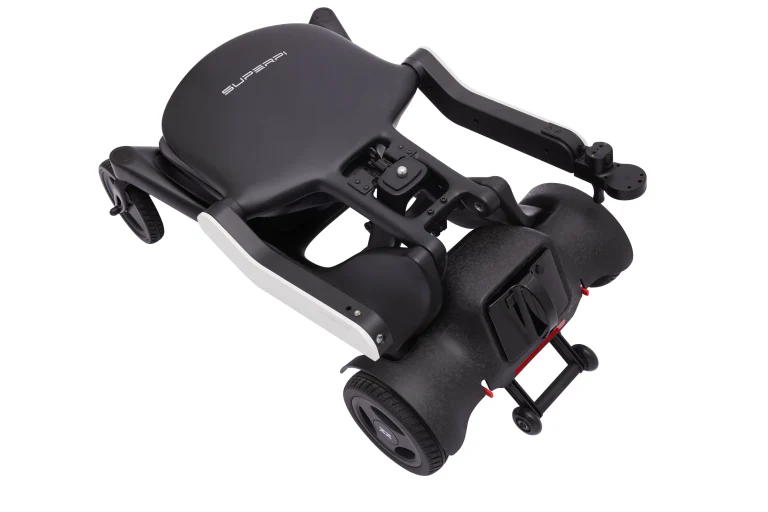
### Choosing the Right Mobility Solution for Seniors: Electric Cars, Scooters, or Walkers? As the global population ages, the need for effective mobility solutions for seniors becomes increasingly critical. Maintaining independence and mobility is essential for older adults to enjoy a high quality of life, engage in social activities, and perform daily tasks with confidence. However, with a variety of options available—electric cars, mobility scooters, and walkers—choosing the right tool can be a daunting task. Each option offers distinct advantages and challenges, tailored to different levels of mobility, lifestyle needs, and physical capabilities. This comprehensive 7,000-word blog explores the pros and cons of electric cars, mobility scooters, and walkers for seniors, providing detailed insights to help individuals and their caregivers make informed decisions. By examining factors such as cost, accessibility, safety, maintenance, and suitability for various environments, this guide aims to empower seniors to select the mobility aid that best aligns with their unique circumstances.
#### Understanding the Need for Mobility Aids Mobility challenges are a common concern among seniors, often arising from conditions such as arthritis, osteoporosis, cardiovascular disease, or the natural decline in muscle strength and balance that accompanies aging. According to the World Health Organization, approximately 15% of adults over the age of 60 experience moderate to severe disability, with mobility limitations being a leading cause. These challenges can restrict seniors’ ability to navigate their homes, visit local stores, or participate in community events, potentially leading to isolation and a reduced sense of well-being. Mobility aids are designed to address these issues by providing support, enhancing independence, and reducing the risk of falls—a major concern for older adults, with one in four Americans aged 65 and older falling each year, according to the Centers for Disease Control and Prevention (CDC). The choice of mobility solution depends on the individual’s physical condition, financial resources, living environment, and personal preferences. Electric cars offer a broader range of travel, mobility scooters provide a middle ground for short to medium distances, and walkers serve as a foundational support for those with limited mobility but who still wish to walk. Let’s delve into each option to understand its suitability for seniors.
#### Electric Cars: A Comprehensive Mobility Solution Electric cars (EVs) have gained popularity in recent years as an environmentally friendly and cost-effective alternative to traditional gasoline vehicles. For seniors who retain the ability to drive and require transportation over longer distances, EVs present a viable option. Models such as the Hyundai Ioniq 5, Tesla Model 3, and Ford Mustang Mach-E are frequently cited for their comfort, advanced safety features, and sufficient range, making them appealing to older drivers.
##### Advantages of Electric Cars for Seniors 1. **Extended Range and Versatility**: Electric cars offer a driving range of 200 to 400 miles on a single charge, depending on the model and battery size. This allows seniors to travel to medical appointments, visit family, or explore new destinations without the frequent need to recharge. For example, the 2025 Tesla Model Y boasts a range of up to 330 miles, ideal for day trips or weekly outings. 2. **Cost Savings Over Time**: While the initial purchase price of an EV may be higher than that of a traditional car—averaging around $50,000 compared to $40,000 for a gas-powered vehicle, according to Edmunds data—operating costs are significantly lower. The U.S. Department of Energy estimates that driving an EV costs about $485 per year in electricity, compared to $1,117 for a gasoline vehicle. Additionally, EVs require less maintenance due to fewer moving parts, potentially saving seniors hundreds of dollars annually on oil changes, brake repairs, and other services. 3. **Safety Features**: Modern electric cars are equipped with advanced driver-assistance systems (ADAS) such as automatic emergency braking, lane-keeping assist, and adaptive cruise control. These features are particularly beneficial for seniors, whose reaction times and vision may be diminished. The 2025 Genesis GV70, for instance, earned top safety ratings from the National Highway Traffic Safety Administration (NHTSA), providing peace of mind for older drivers. 4. **Environmental Benefits**: EVs produce zero tailpipe emissions, contributing to cleaner air and aligning with the growing emphasis on sustainability. This can be a motivating factor for environmentally conscious seniors or those living in urban areas with strict emission regulations, such as London’s Ultra Low Emission Zone.
##### Challenges of Electric Cars for Seniors 1. **High Initial Cost**: The upfront cost of an EV can be a barrier for many seniors on fixed incomes. Even with federal tax credits of up to $7,500 under the Inflation Reduction Act of 2022, the net cost remains substantial. Used EVs may offer a more affordable entry point, but battery degradation can be a concern. 2. **Charging Infrastructure**: Access to charging stations can be limited, especially in rural areas. Home charging requires installing a Level 2 charger, which costs between $500 and $2,000, plus potential electrical upgrades. Public charging stations, while growing—reaching 204,000 non-home chargers in the U.S. by 2024, per the International Council on Clean Transportation—may still require planning for longer trips. 3. **Physical and Cognitive Demands**: Driving an EV requires the ability to enter and exit the vehicle, operate a steering wheel, and manage charging logistics. Seniors with arthritis or cognitive decline, such as dementia, may find these tasks challenging. Additionally, the technology interfaces in EVs, while user-friendly for some, can overwhelm those unfamiliar with digital systems. 4. **Space and Storage**: EVs are larger than scooters or walkers, requiring garage space or a designated parking area with charging access. This may not be feasible for seniors living in apartments or assisted living facilities.
##### Suitability Electric cars are best suited for seniors who are still confident drivers, live in areas with reliable charging infrastructure, and need to travel beyond the range of scooters or walkers. They are ideal for those who value comfort, safety, and long-term savings but may not be practical for individuals with significant mobility or cognitive impairments. #### Mobility Scooters: A Balance of Independence and Convenience Mobility scooters, also known as electric scooters or personal mobility aids (PMAs), have become a popular choice for seniors who need assistance with short to medium-distance travel but prefer to avoid the complexities of driving a car. Brands like Pride Mobility, Drive Medical, and Zip’r offer a range of models, from portable three-wheel scooters to heavy-duty four-wheel options, catering to diverse needs.
##### Advantages of Mobility Scooters for Seniors 1. **Enhanced Independence**: Mobility scooters allow seniors to navigate supermarkets, parks, or community centers without relying on others. The Pride Go-Go Sport, for example, offers a 12-mile range and a top speed of 4.7 mph, enabling users to run errands or enjoy outdoor activities with ease. 2. **Ease of Use**: Most scooters feature intuitive controls, such as a tiller with a thumb throttle, making them accessible to individuals with limited dexterity. The lightweight EV Rider Transport 4AF, weighing just 40 pounds, includes an auto-folding feature, simplifying storage and transport. 3. **Affordability**: Compared to electric cars, mobility scooters are more budget-friendly, with prices ranging from $500 for basic models to $3,000 for heavy-duty versions. Many are eligible for partial coverage under Medicare Part B if deemed medically necessary, reducing out-of-pocket costs. 4. **Portability**: Portable scooters can be disassembled or folded to fit in a car trunk, offering flexibility for travel. The Golden Buzzaround Carry On, with a weight capacity of 300 pounds and a folding design, is airline-approved, making it suitable for vacations or family visits.
##### Challenges of Mobility Scooters for Seniors 1. **Limited Range and Terrain**: Scooters typically offer a range of 10 to 20 miles per charge, depending on the model and terrain. They struggle on steep inclines or uneven surfaces, such as gravel paths, which can limit their utility in rural or hilly areas. 2. **Safety Concerns**: The lack of stability on rough terrain or at higher speeds (up to 8 mph on some models) increases the risk of tipping, especially for seniors with balance issues. The CDC notes that scooter-related injuries have risen as usage increases, emphasizing the need for proper training and safety features like anti-tip wheels. 3. **Battery Maintenance**: Scooters rely on rechargeable batteries, which require regular charging (typically 6-8 hours) and eventual replacement every 1-2 years, costing $100-$300. A depleted battery can strand users, necessitating careful planning. 4. **Space and Storage**: While more compact than cars, scooters still require storage space, either at home or in a vehicle. Indoor use may be restricted by narrow doorways or cluttered living spaces, particularly in older homes. ##### Suitability Mobility scooters are ideal for seniors with mild to moderate mobility limitations who can still transfer in and out of the device independently. They are best for urban or suburban environments with flat surfaces and are a good compromise for those who need more than a walker but less than a car. However, they may not suit individuals with severe balance issues or those living in rugged areas.
#### Walkers: The Foundation of Assisted Mobility Walkers, including standard models and rollators (walkers with wheels), are the most basic mobility aids, designed to provide support for seniors who wish to remain ambulatory. Brands like Hugo and Medline offer ergonomic designs with features such as padded seats and adjustable heights, catering to a wide range of users.
##### Advantages of Walkers for Seniors 1. **Physical Activity**: Walkers encourage walking, which helps maintain muscle strength, joint flexibility, and cardiovascular health. The American Heart Association recommends at least 150 minutes of moderate exercise weekly, and using a walker can contribute to this goal. 2. **Stability and Safety**: Four-wheeled rollators, such as the Hugo Elite, provide a wide base of support and hand brakes, reducing the risk of falls. The CDC reports that walker use can decrease fall rates by up to 50% when properly fitted. 3. **Affordability and Accessibility**: Walkers are the least expensive option, with prices ranging from $30 for basic models to $200 for advanced rollators. They require no charging or complex maintenance, making them accessible to seniors on tight budgets. 4. **Compact Design**: Walkers fold easily for storage or transport, fitting into small apartments or car trunks without difficulty. The Medline Premium Empower Rollator, with its step-inside design, enhances maneuverability in tight spaces.
##### Challenges of Walkers for Seniors 1. **Limited Range**: Walkers are designed for short distances, such as moving around the home or walking to a nearby mailbox. Prolonged use can lead to fatigue, especially for those with severe mobility issues. 2. **Physical Effort**: Using a walker requires upper body strength to lift or push it, which may be challenging for seniors with arthritis or respiratory conditions like COPD. The effort can also discourage regular use if not paired with physical therapy. 3. **Terrain Restrictions**: Walkers are less effective on uneven surfaces, such as grass or gravel, and may require assistance in outdoor settings. The 6-inch wheels on the Hero Medical Seat Walker, while an improvement, still limit off-road capability. 4. **Stigma**: Some seniors may feel self-conscious using a walker, perceiving it as a sign of frailty. This psychological barrier can reduce adoption

